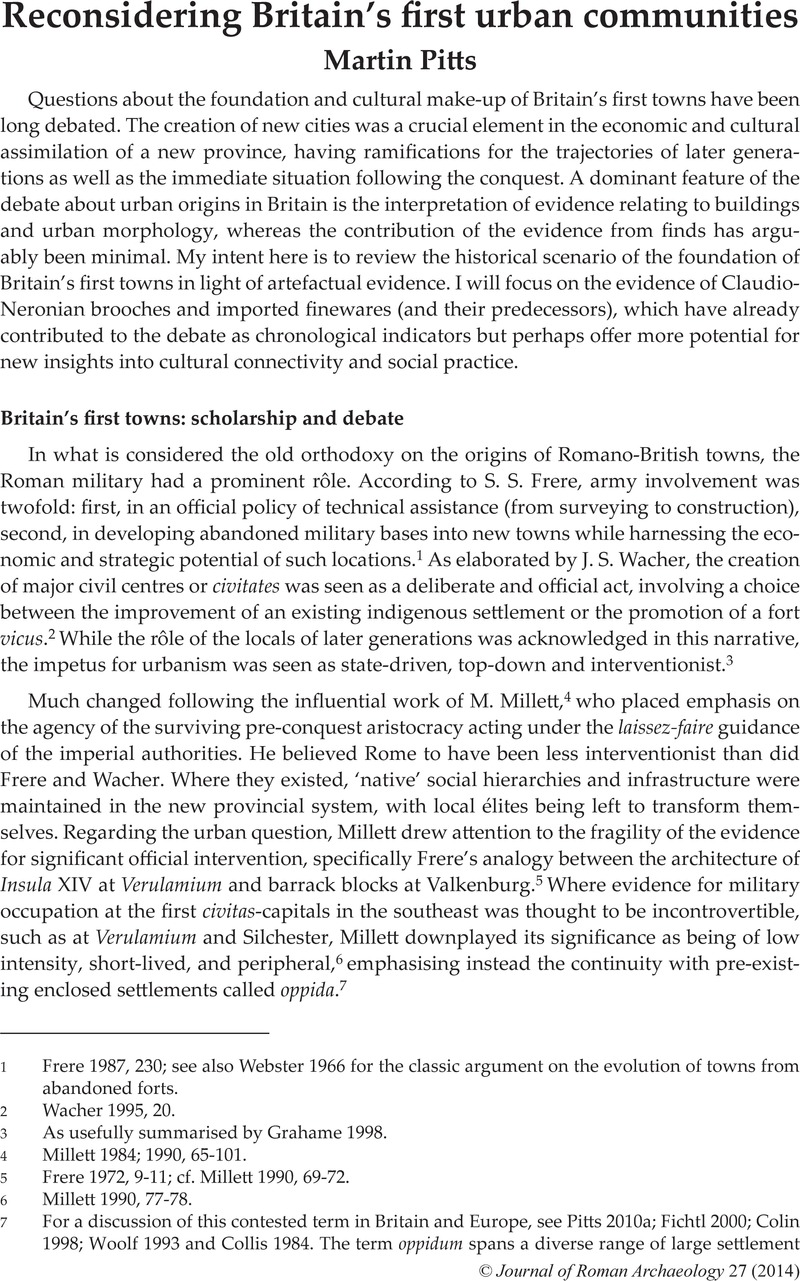Crossref Citations
This article has been cited by the following publications. This list is generated based on data provided by Crossref.
Cool, H.E.M.
and
Baxter, M.J.
2016.
Brooches and Britannia.
Britannia,
Vol. 47,
Issue. ,
p.
71.
Cool, H.E.M.
2016.
RECREATION OR DECORATION: WHAT WERE THE GLASS COUNTERS FROM POMPEII USED FOR?.
Papers of the British School at Rome,
Vol. 84,
Issue. ,
p.
157.
Marshall, Michael
and
Seeley, Fiona
2018.
From the Spreadsheet to the Table? Using 'spot-dating' level pottery records from Roman London to explore functional trends among open vessel forms.
Internet Archaeology,
Allison, Penelope
2018.
An Introduction to a Research Network: the rationale and the approaches.
Internet Archaeology,
Christmas, Jacqueline
and
Pitts, Martin
2018.
Classifying and Visualising Roman Pottery using Computer-scanned Typologies.
Internet Archaeology,
van Helden, Daniël
Mirkes, Evgeny
Tyukin, Ivan
and
Allison, Penelope
2022.
The Arch-I-Scan Project: Artificial Intelligence and 3D Simulation for Developing New Approaches to Roman Foodways.
Journal of Computer Applications in Archaeology,
Vol. 5,
Issue. 1,
p.
78.





